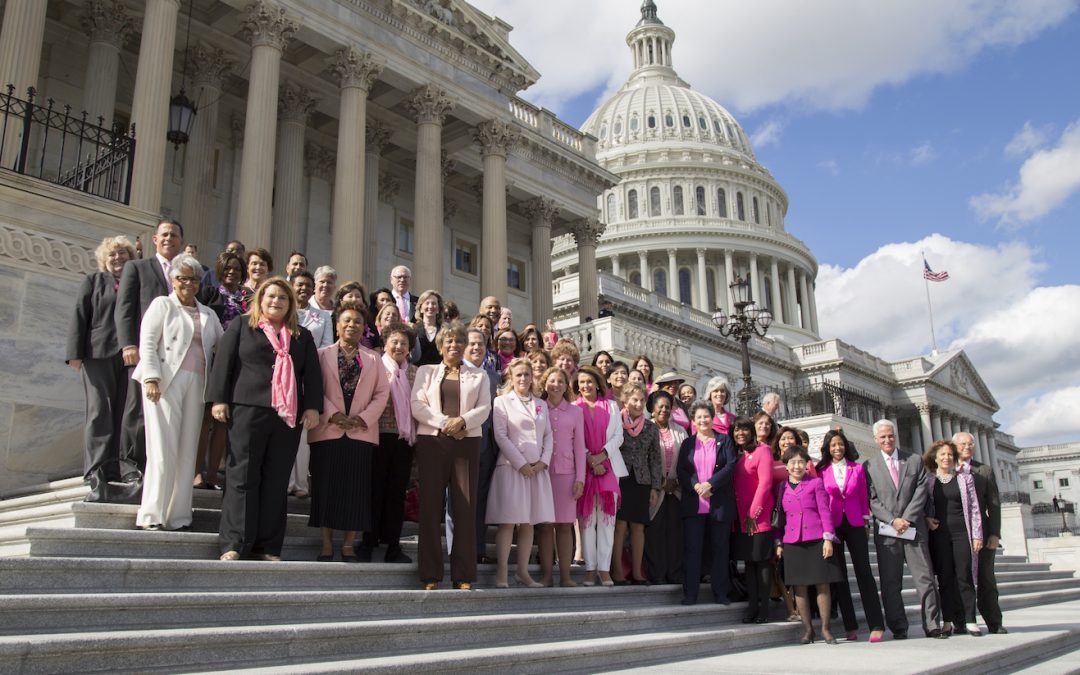WASHINGTON—Despite historic levels of diversity on ballots nationwide, voters in the 2020 election are less concerned with a candidate’s race or gender than in times past.
A candidate’s race or gender still plays a role in many people’s decision to vote. But descriptive representation—the idea that people want to elect representatives that reflect their own self-description—has become secondary to a politician’s track record on supporting underrepresented communities, largely thanks to a changing electorate seeking more concrete proof of support from their representatives and a rapidly diversifying government that has helped normalize candidates from different backgrounds.
“The more we’re electing women and women of color and all of those people,” said documentary filmmaker Wendy Sachs, the easier it is to “move into the next phase where it doesn’t really matter anymore.”
Her documentary, “SURGE,” follows three women candidates running for House seats during the 2018 midterm election as it chronicles the record number of women congressional candidates. While the film is meant to be inspirational and a testament to the progress women and minority candidates have made in the U.S., Sachs said it’s important to remember that the U.S. is still far from reaching the goal of equal representation.
The data supports the idea of progress. Women and minorities have steadily gained representation in federal and state offices since 2014, according to data from the Center for American Women and Politics at Rutgers University. Minority women currently make up a record 38.6% of the 127 women in Congress and 25.2% of the 2,132 women state legislators (29.3% of the total) serving nationwide. Second only to last year’s record, 28.9% of state executive positions are held by minority women.
A record 115 women of color were nominated for House seats in the 2020 election. Only two minority women are on the 2020 ballot for Senate races despite women making up 30.8% of all Senate candidates. The majority of these gains came from the Democratic Party.
Diverse representation matters for two main reasons, according to Tabitha Bonilla, political science professor at Northwestern University.
“First, Black and Latinx representatives are more likely to be responsive to the specific needs of their communities,” she said. “Second, descriptive representatives tend to see greater amounts of responsiveness within their communities.”
Diversity can impact legislation at all levels. A 2018 review of more than 80,000 records of communication between members of Congress and federal agencies during the 108th to 113th Congress found that legislators from underrepresented groups were more likely to advocate for members of those communities by six to nine percentage points.
Although the increase in representation of women of color has largely been limited to the Democratic Party within the last two decades, Republican nominations of women increased significantly in 2020.
CAWP data shows that Republican candidates are 28.7% of the total number of women of color House nominees in 2020, an increase from the last election but still less than the 32.4% of candidates nominated by the party in 2004.
Voters are paying attention.
According to focus groups done last year by IGNITE, a nonprofit focused on empowering young women through politics, 68% of young women polled said that seeing a woman on the ballot would make them more likely to vote. Even more women, 72%, said that seeing racially diverse candidates would make them more likely to vote.
In 2020, though, the impact of numerical gains in diverse representation on voters is being tempered by contextual events and new voter expectations.
“We aren’t in a ‘politics as usual’ circumstance,” said Danielle K. Kilgo, professor of journalism and diversity at the University of Minnesota. “And there are a lot of factors, threats and political circumstances of this moment that make it incredibly hard for women politicians of color to make the impact they could in other political times.”
Quadira Coles, a former IGNITE fellow and future congressional hopeful, also said voters are now focused on more than descriptive representation.
“I think things are shifting away from just being about race and just being about gender,” said Coles. “We’re really digging deep into the unique issues that impact different people.”
Sara Guillermo, executive director of IGNITE, said she spoke with many Gen Z and millennial voters who did not feel like they could see themselves in any of the candidates on their 2020 ballots, but she urged them to vote anyway.
“You may not totally relate to this particular candidate,” she told them, “but there is a whole other part of the ballot that we need to get to and have some more deeper conversations about.”
Her group has focused on filling the 500,000 governmental seats that exist at the city level around the country, depending on a “trickle-up effect” to ultimately get more women up ballot.
Coles attributed much of her development as a leader and an activist to her work with IGNITE, which she says helped her understand the ways in which representation matters beyond physical attributes.
As informed voters, “we want to know everything— everything that’s on the menu,” she said. “What do you come with? And who do you come with?”

